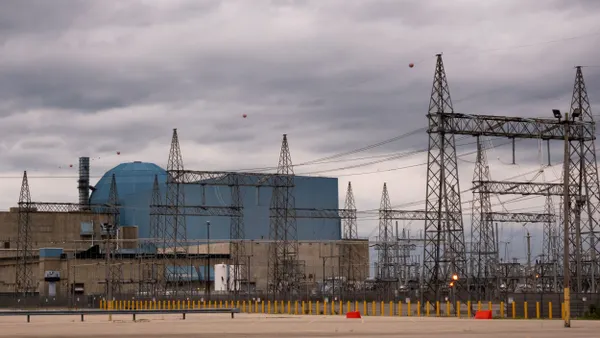Public Service Enterprise Group expects its utility Public Service Electric & Gas will spend a record $3.7 billion on capital projects this year, about $200 million more than planned, Ralph LaRossa, PSEG chair, president and CEO, said Tuesday during an earnings conference call.
Starting this year, PSE&G expects to spend $15.5 billion to $18 billion in capital investments through 2027, driving compound annual rate base growth by an expected 6% to 7.5%, LaRossa said. Including PSEG Power, the parent company’s total capital investment program for the period is $16.3 billion to $18.9 billion, the company said in its latest quarterly report filed with the U.S. Securities and Exchange Commission.
A 10-year, up to $15/MWh federal production tax credit for nuclear power will help PSEG avoid issuing new equity or selling assets to fund its five-year capital investment program, LaRossa said.
PSEG is focused on modernizing its infrastructure, improving reliability and resilience, increasing energy efficiency and delivering cleaner energy, the Newark, New Jersey-based company said in the quarterly filing.
With its “low volatility” quarter, PSEG is a “sleepy utility candidate of the year” amid sector-wide concerns, according to Guggenheim Partners analyst Shahriar Pourreza. “Quiet execution mode continues to highlight the value of a simple, equity [issuance] free growth story,” he said in a client note Tuesday.
The company is well positioned compared to its peers given its declining financing risks and low-risk growth profile focused on New Jersey’s policy priorities, Pourreza said.
Highlighting growth opportunities, PJM Interconnection staff is recommending that PSE&G be awarded a $447 million transmission project that could come online in 2027, LaRossa said, noting a final decision is expected in December.
“This is another example of regulated opportunities that we are pursuing, and we intend to leverage our considerable transmission skills and similar opportunities that arise,” he said.
As part of its focus on regulated operations, PSEG in May sold its 25% equity interest in Ocean Wind I, a 1.1-GW offshore wind project, to Ørsted. LaRussa said he was “just happy” with the decision to sell its stake in the project.
After PSE&G’s earnings call, Ørsted said it was canceling its Ocean Wind 1 and 1.1-GW Ocean Wind II projects, partly because of supplier delays and higher U.S. interest rates.
PSEG and Ørsted each owns half of Garden State Offshore Energy, which holds rights to an offshore wind lease area south of New Jersey. PSEG is evaluating its options for selling its stake in GSOE, according to its quarterly report.
Meanwhile, PSEG Power’s nuclear fleet — totaling 3,766 MW — produced about 8.1 TWh in the third quarter and 24.3 TWh in the first nine months this year, running at a capacity factor of 95.3% and 95.8% for the quarter and year-to-date periods, respectively, Daniel Cregg, PSEG chief financial officer, said.
PSEG expects the nuclear plants to produce 30 TWh to 32 TWh this year, and has hedged about 95% to 100% of the production at an average price of $31/MWh, he said. PSEG expects similar production next year, and has hedged 85% to 90% of the generation at an average price of $38/MWh, he said.
PSEG warned in its quarterly report that challenges facing the company include regulatory and political uncertainty, including around transmission planning and rates policy and the design of energy and capacity markets. In addition, the company cautioned about the effects of inflation and related volatility in the financial markets, including how it could make it harder to maintain affordable customer rates, which could affect customer collections and regulatory proceedings.
On the financial front, PSEG’s third quarter income jumped 22% to $139 million, or 27 cents/share, up from $114 million, or 22 cents/share, in the year-ago period.
Not counting one-time factors, PSEG’s third quarter income slipped to $425 million, or 85 cents/share, from $429 million, or 86 cents/share, a year ago. Its revenue increased to $2.5 billion in the third quarter, up from $2.3 billion in the same quarter last year.















